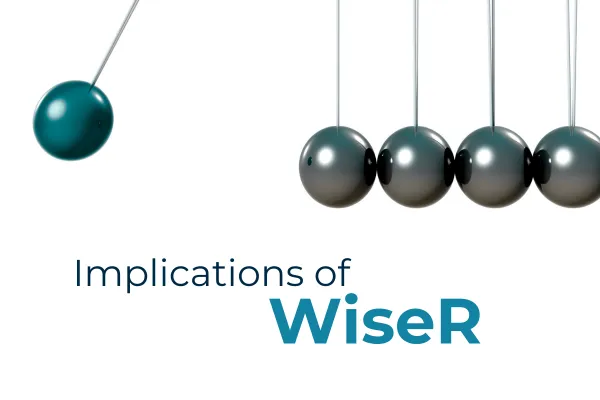
WISeR and the Future of Medicare: What Early Targets and Gold Carding Really Tell Us
In July 2025, CMS announced the launch of the WISeR Model—short for Wasteful and Inappropriate Services Reduction—a six-year demonstration that introduces prior authorization for a select group of services in traditional Medicare. At first glance, WISeR may seem like a narrow policy initiative targeting overused procedures. But the implications are broader.
This is not just a demonstration project about claims. It’s a signal about how Medicare is evolving—and what it will expect from both innovators and providers in the years ahead.
A Deliberate Choice of Targets
WISeR’s first phase focuses on procedures such as skin substitutes, electrical nerve stimulation, cervical fusion, and certain pain management interventions. These are not random selections. They represent categories where CMS, the Office of Inspector General, and others have flagged overuse, variation in practice, or prior instances of fraud.
While these services are clinically appropriate for many patients, they are also emblematic of the gray area where utilization can drift from value-driven to volume-driven. For medtech companies whose products fall into or adjacent to these categories, the message is clear: the future of Medicare coverage will not just reward innovation—it will require demonstrable clinical appropriateness, clearly documented and aligned with policy.
In that sense, WISeR’s implementation of prior authorization is not so much about changing the rules, but about actively enforcing the ones that have often existed in the background—in real time, and increasingly through technology-enabled review.
What This Means for Medtech Innovators
For companies developing technologies in neuromodulation, wound care, pain management, or other targeted areas, WISeR represents a turning point.
Rather than treating coverage as a downstream activity—something to be handled once coding and pricing are in place—companies will increasingly need to build front-loaded evidence strategies and provider support infrastructures that align with Medicare’s expectations before a claim is ever submitted.
WISeR also challenges a familiar pattern in medtech: relying on early clinical enthusiasm to drive adoption while coverage and documentation catch up later. That approach is unlikely to succeed in a system where AI tools and clinician reviewers are screening for alignment with clear, codified coverage criteria.
If your go-to-market strategy depends more on clinical enthusiasm than on clinical evidence, WISeR is a reality check. CMS is not using prior authorization to block new technology—it’s using it to sort. If your documentation doesn’t match what the algorithms and reviewers are programmed to expect, your product may be tagged as low-value before a human ever looks at it.
And no—having a code, coverage policy, or even a published payment amount is no longer a guarantee of access. In the WISeR era, these are necessary but insufficient. What matters most is how your technology performs under real-world scrutiny: the documentation, the appropriateness, the outcomes, and the ease with which providers can demonstrate all three.
That includes:
Anticipating the documentation that will be required
Equipping providers with tools to navigate the prior authorization process efficiently
Supporting appeal workflows
Helping clinical teams meet the criteria that would allow them to achieve gold card status over time
In this new environment, the companies that succeed will not only have a strong product—they will have invested in helping their customers operate within a more complex, review-driven payment landscape.
Implications for Providers and the Promise Limitations of Gold Carding
One of the more notable features of WISeR is the potential for “gold carding,” or prior authorization exemptions for providers who demonstrate a high rate of compliant submissions (90%+ affirmation). The concept is not new—it exists in commercial plans and in other CMS programs—but its use here invites further scrutiny.
While the intention is to reduce administrative burden for high-performing providers, there is a risk that this policy will disproportionately benefit larger organizations with infrastructure to support documentation and claims submission workflows. Independent or resource-constrained providers may find it more difficult to consistently achieve the compliance thresholds required for exemption, even with good-faith efforts.
Designing for the Provider Experience: A Strategic Shift for Medtech
Historically, reimbursement support has been framed as a helpful add-on in the medtech sales process—an optional value-added service to assist providers once a product has been adopted. These programs often live downstream of the sales process, activated reactively in response to a denial, a documentation question, or a billing challenge.
But in the WISeR era, that model is quickly becoming outdated.
As prior authorization, documentation rigor, and real-time appropriateness checks become more central to Medicare's operating model, the burden on providers will only grow. What used to be a secondary service is now central to the experience of delivering care. And that means companies can no longer treat reimbursement support as a bolt-on to the sales conversation. It needs to be strategically designed—and integrated into the upstream customer relationship from the beginning.
This shift presents both a challenge and an opportunity.
For medtech companies, it calls for a more intentional approach: developing provider support infrastructures that are not only reactive, but anticipatory. Recognize that supporting access is not just about handing out billing guides, it’s about enabling confidence, reducing cognitive load, and helping customers operate effectively in a changing policy environment.
I see this as one of the most underleveraged and strategically overlooked opportunities in medtech today: when designed thoughtfully, provider support programs are not just operational necessities. They are strategic assets. They differentiate your product in a crowded market, reduce barriers to adoption, and signal a company’s seriousness about partnership and performance.
In a payment system where coverage must be earned in real time, the companies that succeed won’t just offer strong technologies. They’ll offer their customers a way to succeed within the system. And increasingly, that begins well before the first sale.
Nicole Coustier is a medtech startup advisor and U.S. reimbursement consultant. Schedule a conversation at this link.
